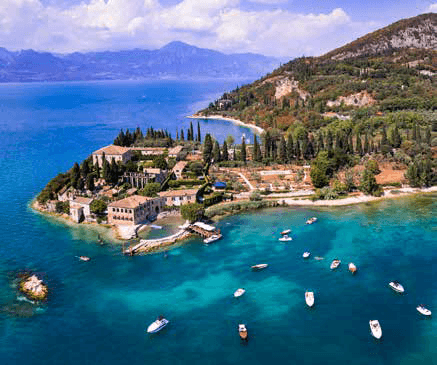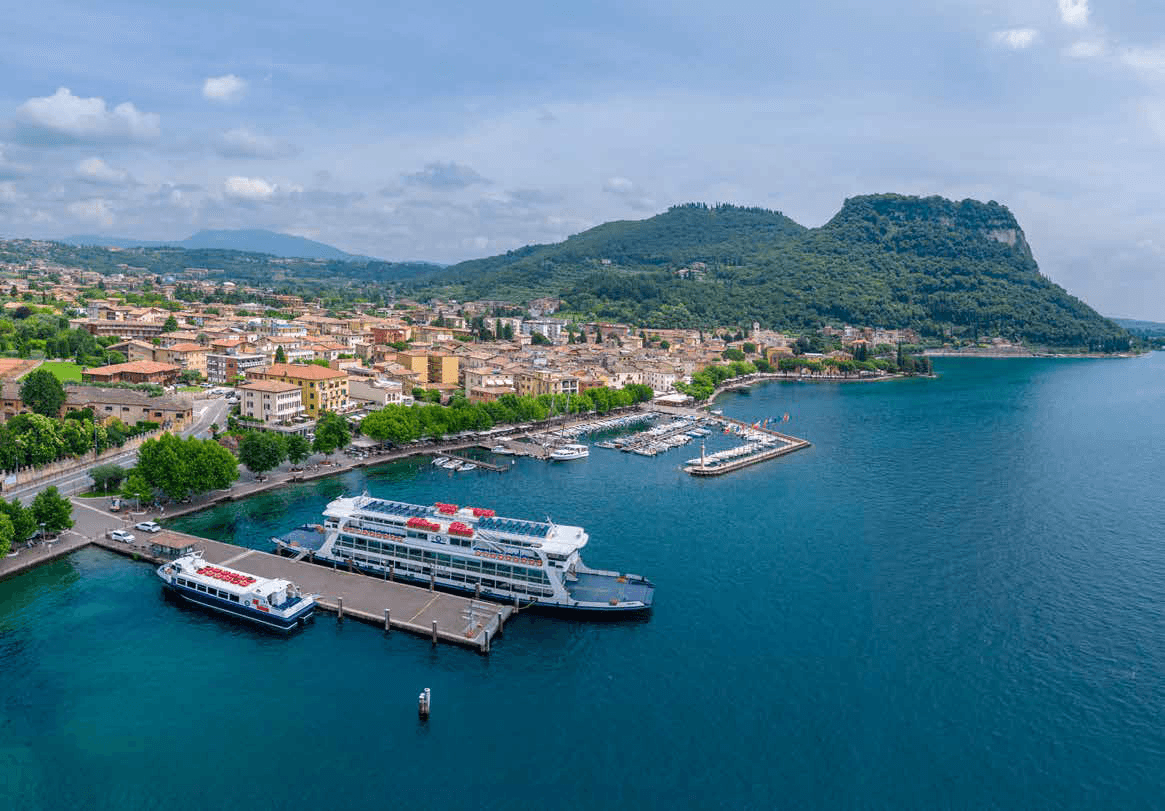Aristocratic villas, centuries’ old buildings and landscapes and a key location in the heart of the Veronese side of Lake Garda make this town a must for visitors.
Garda has always played a key role in the area of the lake whose name it bears. The town’s name is proof of this. Not only did it end up replacing the lake’s ancient Roman name, Benacus, over the centuries but it also derives from the Longobard word ‘warda’, meaning ‘guardpost, observation point’. Located in the centre of a full-blown gulf it overlooks the whole of the southern part of the lake.
THE WONDERS OF ITS LAKESIDE PROMENADE
Once site of a fortress built to defend the town from Barbarian invasion, Garda is at the foot of a large hill (called Rocca) which offers exceptional views of the lake. Stroll through its alleyways and along its lakeside promenade for some of the most picturesque views.
Moving northwards along the banks of the lake past the tables of its many bars takes visitors past Palazzo La Losa, for example. Formed by two large porticoes one on top of the other, this building was designed in the 16th century by architect Michele Sammicheli. It seems impossible now but its five arcades once acted as a small boatyard while, on the first floor and sheltered from the waters of the lake, there was a large loggia with belvedere.
FOLLOWING IN THE FOOTSTEPS OF THE SERENISSIMA
Just a few dozen metres ahead, still on the right-hand side, you can admire Piazza Catullo and the Palazzo dei Capitani: the ancient seat of the government of the Serenissima (Venetian Republic), built between the 14th and 15th centuries in the Venetian Gothic style.
In addition to the three arches on the ground floor, its defining features include the windows on the upper floors: three single-lancet and one double-lancet window with distinctive shapes, between which a small balcony—often adorned with colourful floral arrangements—stands out.
UNMISTAKABLE VILLA ALBERTINI
Villa Albertini stands at the end of the lakeside promenade, a distinctive landmark that is also recognisable to the many visitors who arrive in Garda by ferry each day.
Once owned by the Becelli family, this building has two clearly distinct identities, immediately apparent at first glance. On one side is the white neoclassical facade, built in the 16th century; on the other, the eccentric orange towers, added during 19th-century renovation works.

BEYOND THE HISTORIC CENTRE
Even beyond the streets in the centre of the town, Garda offers unexpected historical and natural gems. One such example is the Pieve di Garda, accessible through a small door along the right side of the Church of Santa Maria Maggiore. Originally built in the 5th century, it stands at the foot of Mount San Giorgio, where the town’s ancient fortress once rose. Much of the original structure was destroyed by an earthquake in the 12th century, and it was during that time that the church was rebuilt in its current form: a cloister surrounded by arcades and balconies. About three kilometres from the town centre lies Punta San Vigilio. Overlooking the idyllic Baia delle Sirene, it can be visited subject to an admission fee. Crystal-clear waters, historic noble villas, and a charming little harbour make this hamlet the perfect place to conclude your visit to Garda.





